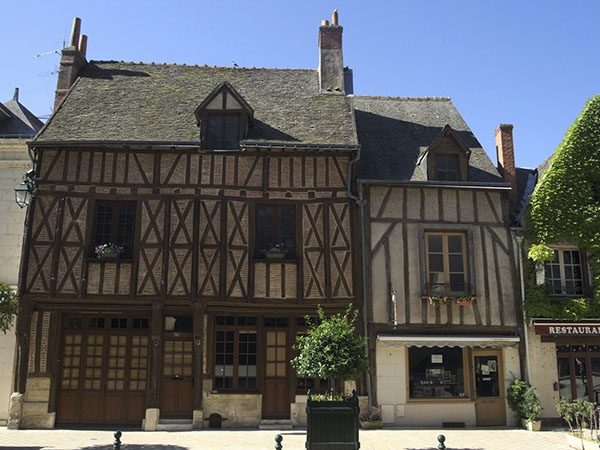On the trail of Francis I
The flow of the Loire River is a natural connection between the sites scattered along its banks and with the countries and cultures whose products have arrived on its currents throughout the centuries. According to UNESCO the changing, living "cultural landscape" of the Loire Valley, a World Heritage-listed site since 2000, illustrates "to an exceptional degree the ideals of the Renaissance... on western European thought and design".
The Loire Valley became the centre of the kingdom of France during the Hundred Years' War between France and England. Between 1430 and 1530 the court resided in Chinon, Tours then Amboise and Blois, which resulted in many societal and artistic changes in the region.
The wars for the Duchy of Naples waged by kings Charles VIII, Louis XII and Francis I hardly brought long-term military success, but they did bring the Italian Renaissance to France. Real change was initiated by Francis I, who was a young and ambitious king. His reign (1515-1547) marked the beginning of the modern era and demonstrated the stabilisation of State institutions. While the king was grappling with the Italian principalities and his enemies, the Emperor Charles V and King Henry VIII of England, the Loire Valley experienced peace. As a hunting enthusiast, the king appreciated the region's game-rich forests and increased his residences there. His Chambord château is the embodiment of a dream, a true monumental "folly". Nonsuch Palace, commissioned by Henry VIII, openly drew inspiration from Chambord.
Thanks to the king, the Loire Valley became a haven for humanism and new artistic ideas. He was passionate about art and architecture, which were transformed during his reign, incorporating the principles of the Italian Renaissance. In his cosmopolitan court, the king would invite Flemish artists as well as the great Italian masters (Jean Clouet, Leonardo da Vinci, Domenico da Cortona, Sebastiano Serlio, Francesco Primaticcio, Rosso Fiorentino, etc.). The transformation of the countryside around the châteaux was also the result of the Italian influence (Pacello da Mercogliano).
The towns, which benefited from the court's presence, then became drivers of change. Tours saw a number of wealthy bourgeois families rise to power, such as the Beaune-Semblançays, the Bohiers, the Briçonnets, etc. The business of these "gentlemen of finance" enriched the Loire Valley with the finest buildings of the early Renaissance in France. Chenonceau, Azay-le-Rideau, Villandry and hundreds of others gravitated around the royal residences like moths to a flame. The construction of collegiate churches also showed that the ambition of the aristocracy throughout the country was to found their dynastic sanctuaries in the Touraine region in particular.
The sites on this route guide visitors along the Loire, following the evolution of the French Renaissance from its very beginnings to its apogee. Public figures as well as the towns, châteaux and sacred monuments all illustrate a distinctive stage in this period of openness to new universal ideas.
